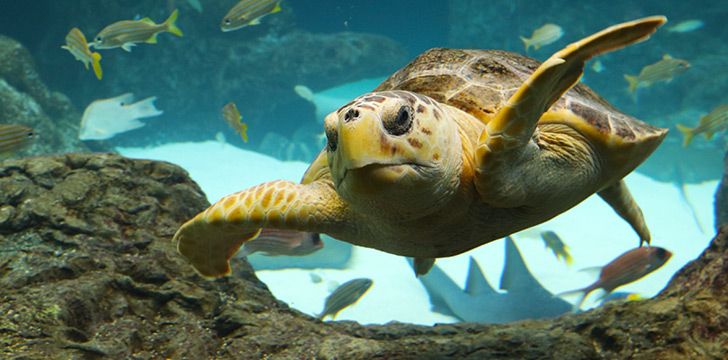Turtles are some of the cutest creatures in the sea!
Some people like to keep them as pets, if it’s a tiny turtle, or a huge tortoise, there is pretty much no exception.
Let’s find out some facts about these reptilian cuties that will make you love them even more!
Antarctica is the only continent that turtles don’t live on.
Being the adaptive creatures they are, turtles can survive in pretty much any condition.
While most of the species are found in southeastern America and South Asia, they can still be found in other parts of the world.
Sea turtles can sometimes end up in the European Arctic, but you won’t find any in Antarctica.
The leatherback turtle is the most widely distributed turtle, venturing into the Arctic Circle and as far south as the bottom of New Zealand.
Every species of turtle lays its eggs on land.
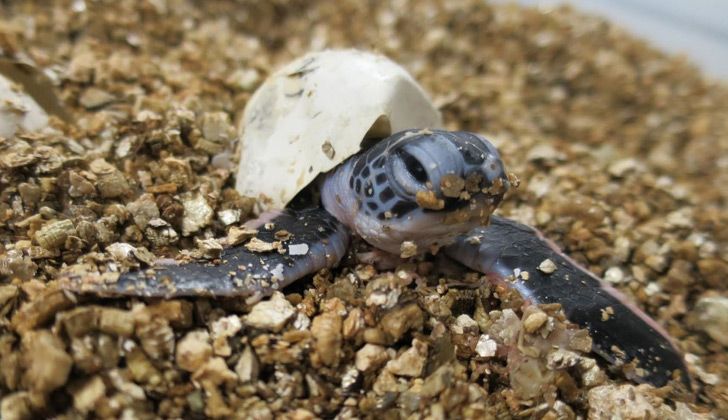
This might not seem THAT crazy – until you take into account that there are over 300 species of turtles!
Of course, their laying habits may be a little different, but all turtles lay their eggs on land.
For example, leatherback turtles will migrate thousands of miles just to lay their eggs! They will travel back to the same beach that they were born on and lay their own eggs.
River turtles will usually lay their eggs near to where they live and eat on the shore.
Turtles that live on land, like box turtles, find moist soil in forests or marshlands.
It is only if the turtles have no other option that they might lay their eggs in the water, but that is only as a last resort.
Turtles can drown.
Even though they seem to stay underwater for huge amounts of time, turtles can definitely drown. Anything without gills can drown!
In general, turtles can hold their breath for 30 minutes. But of course, with hundreds of species, this can vary.
It also depends on the location and the temperature of the water.
One species, the loggerhead turtle, has been observed at staying underwater for 10 hours!
When a sea turtle is resting or sleeping, it can stay underwater for 4-7 hours.
Turtles are smart enough to return to the surface when they need air.
However, if a turtle is stressed, for example, from getting stuck in a fishing net, it can use its oxygen faster and even drown within minutes.
Turtles can easily outswim humans.
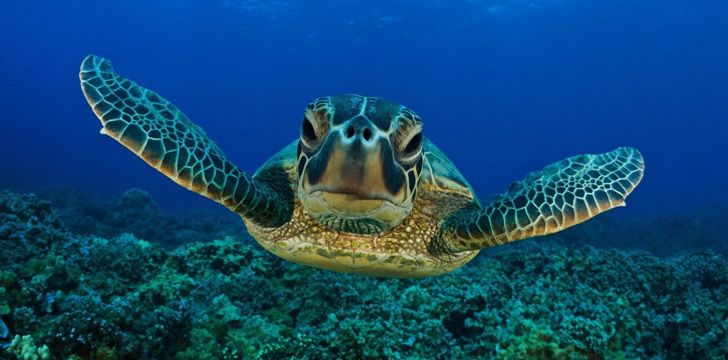
If you raced a turtle against Michael Phelps, the turtle would win!
Even though we usually see them bobbing about in the water, if they have to make a swim for it, they’re likely to get away.
The leatherback turtle can swim at speeds up to 22 miles per hour! In comparison, Michael Phelps’s swimming speed has been capped at about 6 miles per hour.
While underwater, turtles don’t swim very fast unless they are threatened. If they did, they would run out of air much faster.
The gender of the turtle is determined by temperature.
Other species have their sex assigned as soon as fertilization occurs. But when it comes to turtles, they’re a special case.
The temperature of the eggs while they’re developing, is the deciding factor here. This is something called temperature-dependent sex determination.
If a turtle’s eggs incubate below 81.86 degrees Fahrenheit, the turtle eggs will hatch male.
If they’re incubated above 87.8°F, the babies will be female.
Anything in between these temperatures could result in the hatchling being either male or female.
Things like warmer sand will influence more female turtles to be hatched.
And, of course, on a mass scale, climate change could impact turtle species by hatching more females resulting in not enough males being born.
The most dangerous turtle is entirely carnivorous.
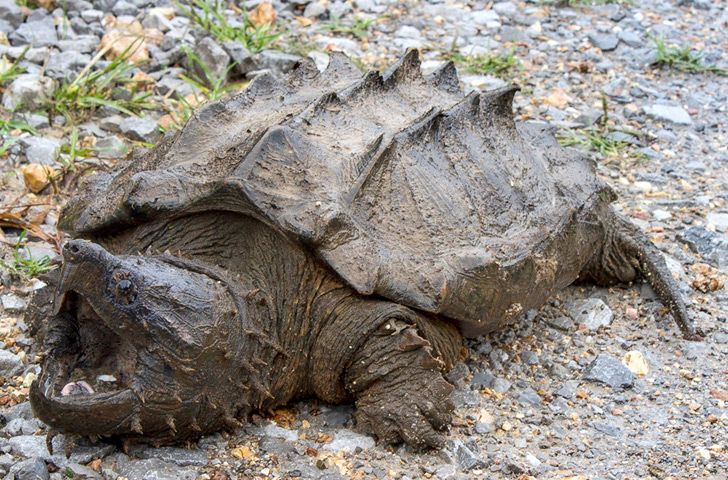
The Alligator Snapping Turtle is as scary as it sounds.
These bad boys weigh over 200 pounds, and they’re not to be messed with!
Their huge powerful beaks can completely amputate the body part that they attack, which is no surprise considering their bite force is 1,000 pounds.
Fortunately, they don’t actively attack unless they are threatened.
To get their food, they lay on the bottom of a riverbed with their huge mouths open. Then, they wiggle their red tongues that look like worms, which attract fish to swim right into their mouths!
Turtles have a built-in compass.
As we’ve mentioned before, turtles can return to the same beaches they were born on.
But how do they find it among the millions of beaches in the world?
Turtles are sensitive to the earth’s magnetic field, which is like a map to turtles.
In a magnetic field, there is the strength of the field and the angle at which the field lines cross the earth.
Turtles can detect both components and figure out where in the ocean they are, so really their sense of direction is even stronger than a compass!
Turtles live about twice as long as humans.

Turtles are among the animals that live longer in the wild.
In captivity, the longest their life span can be anywhere from 10-80 years!
However, wild sea turtles take a really long time to grow up! They don’t reach reproductive maturity for almost 50 years.
Generally, sea turtles can live for around 150 years.
However, it is difficult for scientists to determine the age of a turtle, so it’s possible some sea turtles are even 400-500 years old!
All tortoises are turtles, but not all turtles are tortoises.
If you call a tortoise a turtle, you’re not wrong. However, when people refer to turtles VS tortoises, it’s usually the difference between where they live.
While most turtles live in or near water, tortoises are exclusively land animals.
The only thing tortoises do regarding water is drink it!
Another smaller difference is that tortoises are mostly vegetarians, while other turtles are omnivores.
Turtles cry for a reason.
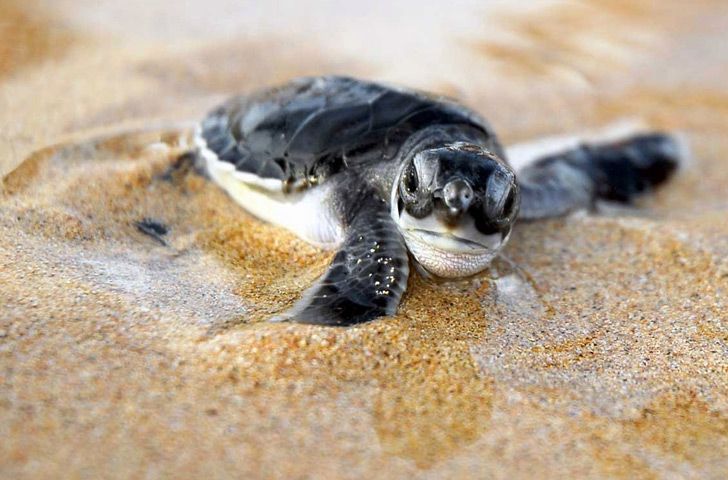
If you’ve ever seen a turtle with tears in its eyes, it’s not because they’re sad!
Unlike humans, sea turtles can drink the ocean’s saltwater with no problem.
They have a special organ that gets rid of the excess salt, kind of like a filter, which is then excreted out of their eyes.
This also works in the favor of turtles when they lay their eggs because the water coming out of these glands protects their eyes from the sand!
Which of these 10 turtle facts was your favorite? I’m personally glad turtles don’t have anything sad to cry about!
Oh, and here’s a bonus fact: Did you know that turtles can breathe through their butts?!
